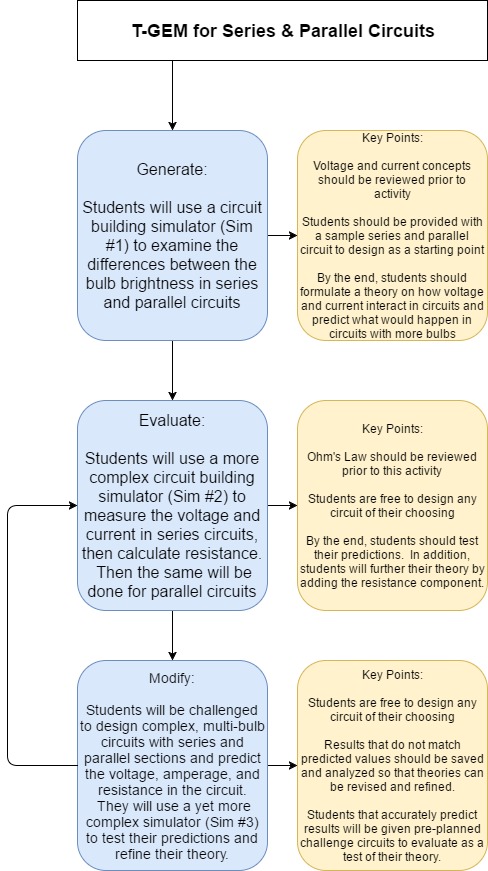T-GEM is a pedagogical approach used to design technology-enhanced, inquiry-based learning activities. It’s primarily goal, as defined by its name, is have students “G”enerate ideas about scientific relationships, “E”valuate their constructed knowledge, and “M”odify this knowledge as they apply their knowledge to more complex problems that help refine their understanding. (Khan, 2007)
An area that may benefit from the addition of T-GEM instruction would be the Science 9 electricity unit that I teach. In it, one of the learning outcomes is for students to understand the relationship between voltage, current, and resistance in both series and parallel circuits. Traditionally, this may have been taught didactically through notes and post-lecture activities simply to reaffirm the lesson topics.
However, in recent years I have approached this from an inquiry-based perspective that has students building various circuits, measuring the three properties, and drawing conclusions. I feel that this can be extended even further with the T-GEM approach.
Below is a flow chart of how I envision an “Electrici-T-GEM” would progress, as well as key points to guide student focus.

Links to simulations:
References
Khan, S. (2007). Model-based inquiries in chemistry. Science Education, 91(6), 877-905.
Hello Lawrence,
The flow chart is interesting as it adds the component of expected outcome to student activities. What instructional supports or scaffolds do you see as necessary to supporting model construction and revision?
Thank you for the links to the simulations as well (the third one did not seem to load for me though). A possible article of interest and debate regarding circuits: Finkelstein, N. D., Adams, W. K., Keller, C. J., Kohl, P. B., Perkins, K. K., Podolefsky, N. S., … & LeMaster, R. (2005). When learning about the real world is better done virtually: A study of substituting computer simulations for laboratory equipment. Physical Review Special Topics-Physics Education Research, 1(1), 010103. Samia